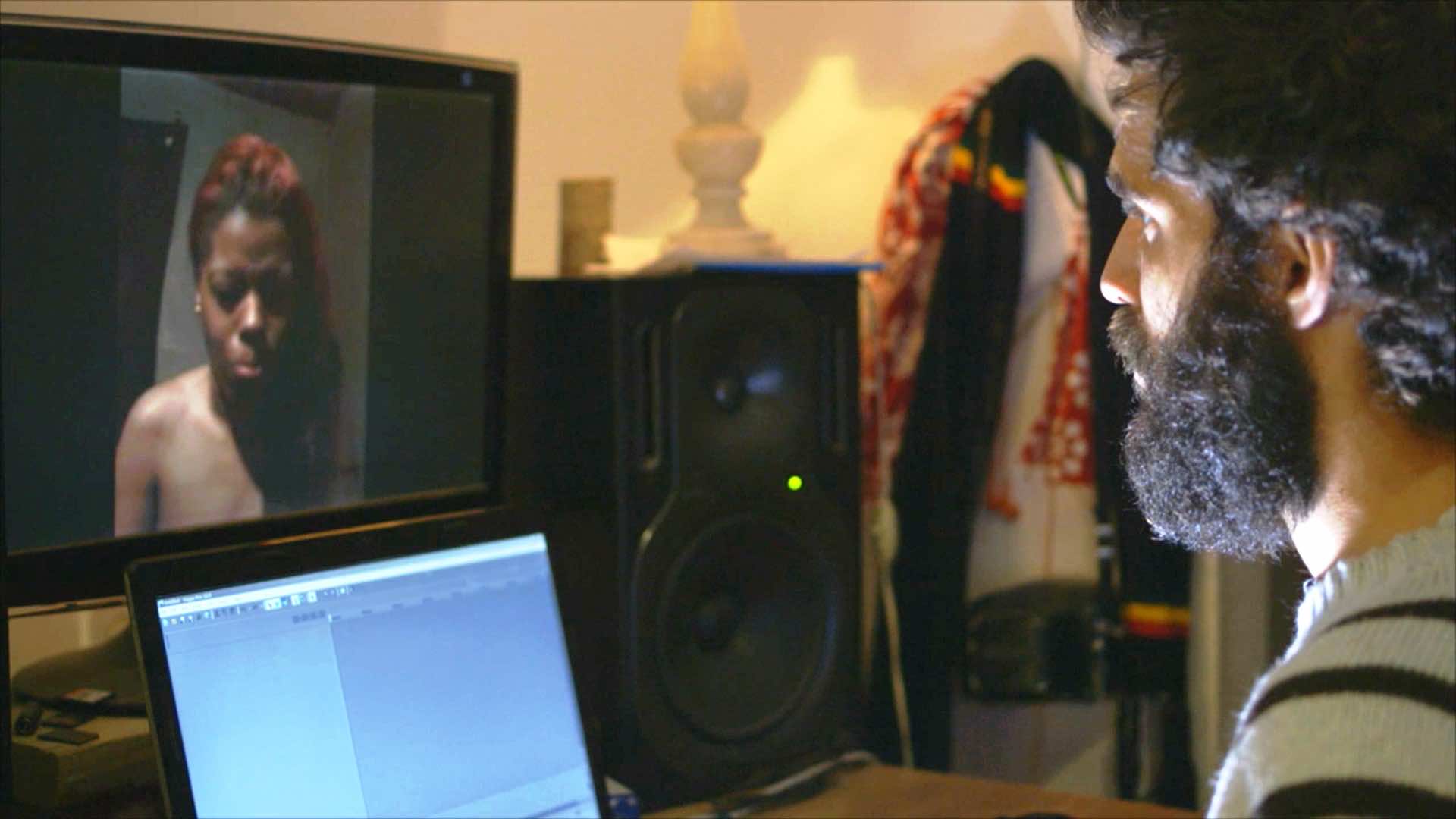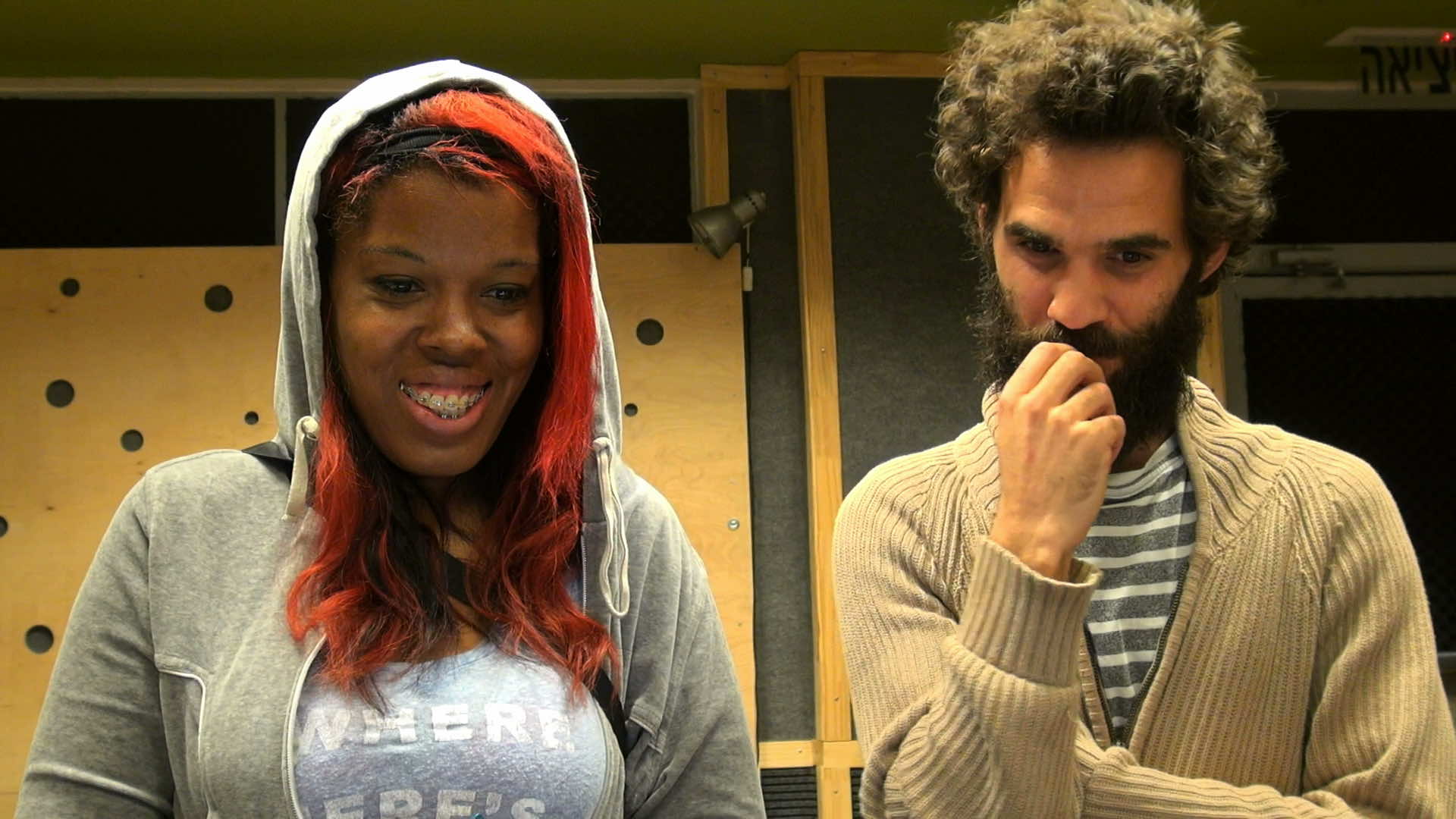Presenting Princess Shaw is a sweet yet frank documentary on the aspirations of an amateur YouTube star as she unwittingly is about to go viral. By focusing on Princess Shaw (real name: Samantha Montgomery) — the YouTube user — and the popular YouTube channel of Israeli multi-instrumentalist Kutiman (real name: Ophir Kutiel), Israeli director Ido Haar reveals the rather noble possibilities of a relatively new medium in the world of music. Due to legal circumstances, Kutiman’s channel is free of pop-up ads so as not to infringe on the contributions of the musicians he samples. This allows for more cathartic rewards of success to resonate and reveals how vital and essential success is to the unknown talent of Princess Shaw.
Using a single handheld camera, Haar spent several months with Montgomery in New Orleans and Atlanta under the half-truth that he is making a documentary on YouTube singers. In reality, he was documenting the raw beginnings of what has become Kutiman’s most popular video. The channel has gained notoriety across the world wide web thanks to Kutiman’s skill in composing music based on samples culled from amateur YouTube videos, from a little girl practicing piano to an older dude showing off guitar solos. He scours YouTube for these little moments that he can construct an original song from via loops and pastiche. During one of his searches, Kutiman falls enraptured by the raw talent of Shaw who uploads husky-voiced acapella originals filled with longing which are abstractly based on a traumatized life of childhood sexual abuse and an on-off relationship with an ex-girlfriend. Stripped of the music yet to come, her songs exude not only an authenticity of heart but have a rhythm that beg for a big orchestral back-up, and Kutiman is the man to deliver it.
This is all unbeknownst to the 39-year-old Montgomery, who has invited Haar into her daily grind of working as a nurse at an old folks home. She lives in a modest one-bedroom New Orleans apartment, far from the charmed communal life Kutiman lives in at an Israeli kibbutz with a nice recording studio. Toggling between Kutiman at work and Shaw’s humble life, Haar has a distant, observational presence. The filmmaker captures Shaw’s solitude even when he zooms his camera close to her face. Haar never imposes himself into the narrative, though. When she explains her struggle as an aspiring singer, she does so to co-workers or to her YouTube followers. She also vents about her past of childhood rape to her family members who know too well about the darkness that defines her identity.
Still, she may very well be talking to no one, in her more public YouTube diary. Haar always keeps the number of views and subscribers of her channel out of frame. Her failure to connect is instead made real during an open-mike night where she pours her voice out to a mostly empty and unresponsive bar, wailing incredibly even if a bit unsteady on her high heels. The emptiness of the club, coupled with a failure in auditioning for “The Voice,” are genuine moments that don’t ever detract from the power of Shaw’s incredible, brassy tenor. Like Amy Winehouse, she writes compelling songs informed by personal experience, and it feels heartbreaking that no one seems to want to listen.
With her videos, Shaw is doing nothing else but reaching out for a connection and admiration (and maybe some unconditional love) from the anonymity of the web. That she does so with such frankness is heroic in its own right. As the film moves along, Haar cuts to Israel where Kutiman constructs his latest opus with Princess Shaw’s vocal at the center. It’s all like a sweet practical joke, and you kind of hope that Haar and Kutiman will let Shaw off the hook early on. When they do, it comes across as more than a relief. The resulting work is a genuinely well-defined track that reveals Kutiman’s brilliant ear for arranging and his aspiration to lift Shaw’s voice to the forefront, and of course the reaction by Shaw and in turn the audience is visceral.
Presenting Princess Shaw offers heartfelt insight into the new language of the YouTube medium. Because Kutiman’s channel is free of pop-up ads, it somewhat cleanses the film of any feelings that Kutiman is taking advantage of his sources. Still, one cannot help but notice that he does enjoy some kind of comfort in what he does as a well-known global musician. But most of all, the viewer will come away charmed by Shaw’s genuine pleasure in simply being recognized. Shaw’s frankness for her desire for success and the pain of her past, make her easy to warm up to and the truth in her talent is undeniable.
Though there is a dream-come-true aspect to Shaw becoming a viral sensation, Haar doesn’t forget to keep things grounded. Even after her performance in a Tel Aviv theater filled with admirers and a tour across Israel with Kutiman, Shaw returns to New Orleans. After all that, her SUV is still on cinder blocks, exposing that success in the virtual world is hard to convert to success in the real world. But to see an extra spring in her step as she heads of to work in her scrubs is plenty of redemption for what she has endured. You only wish happiness for her, as bittersweet as this semblance of attention feels by the time the film’s end credits roll sound-tracked to her wonderful music.
Some will be happy to know Shaw is doing all right. I met her and Haar at this year’s Miami International Film Festival, and we talked about the film and its perception. Stay tuned next week for an exclusive interview.
(Copyright 2016 by Hans Morgenstern. All Rights Reserved. This material may not be published, broadcast, rewritten or redistributed without permission.)












